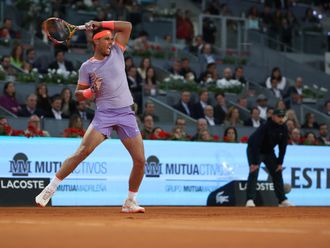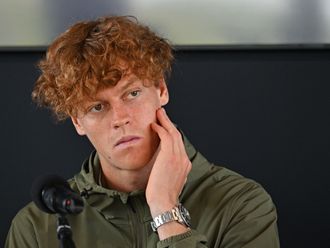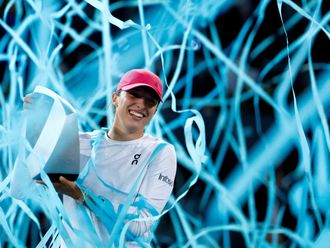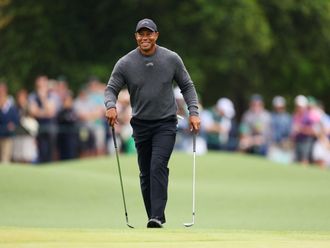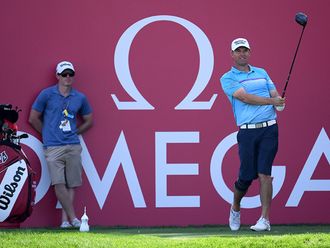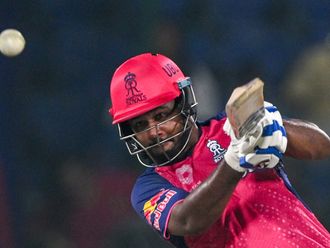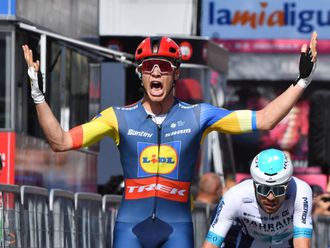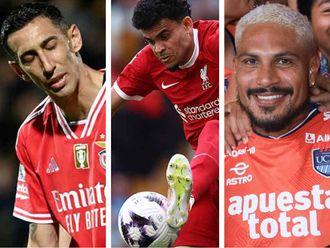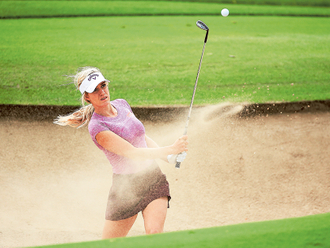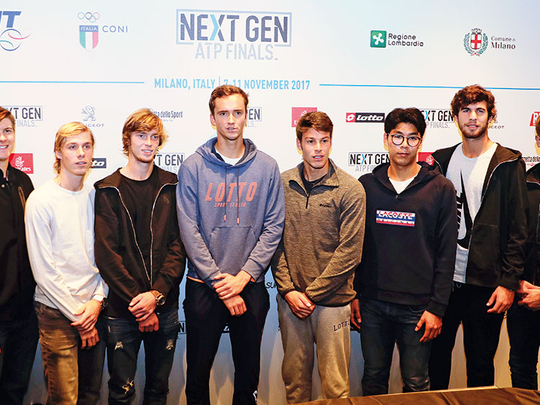
Milan: The Association of Tennis Professionals was forced into a humiliating apology after the draw ceremony for its new showpiece tournament — the Next Gen ATP Finals — was widely decried as sexist and demeaning to women. Held on Sunday night in Milan, the ceremony required the eight players at the event to choose a female model to walk down a catwalk with. The model then revealed the letter “A” or “B” somewhere about their person to denote which of the two groups the player would be participating in. Amelie Mauresmo, Andy Murray’s former coach, was among the first major tennis figures to comment, posting the video of the draw on Twitter accompanied by the word “disgrace”. Judy Murray did the same, using the word “awful”. There was further comment from Alize Cornet, the world No. 38 from France, who wrote “Good job @ATPWorldTour. Supposed to be a futurist event right? #backtozero” The ceremony had been branded as the Red Bull draw party, and the soft-drink company — which has never sponsored a tennis event before — had a significant hand in designing it. As a result, the statement that arrived came from both the sponsor and the tour. “ATP and Red Bull apologise for the offence caused by the draw ceremony for the Next Gen ATP Finals,” the statement said. “The intention was to integrate Milan’s rich heritage as one of the fashion capitals of the world. However, our execution of the proceedings was in poor taste and unacceptable. We deeply regret this and will ensure that there is no repeat of anything like it in the future.” To their credit, many of the young players involved in the ceremony looked both baffled and discomfited to be placed in such an awkward situation. Hyeon Chung, of South Korea, was asked to pull off a model’s glove with his teeth, while Denis Shapovalov’s companion lifted the skirt of her lacy dress to show the letter “A” on her thigh, and Gianluigi Quinzi’s shrugged off her jacket to reveal a “B” on her back. The embarrassment over the draw is likely to overshadow this experimental tournament, which was conceived as a way of testing a number of innovations — shorter sets, no warm-ups, electronic line-calling — without ranking points being at stake. The world’s seven leading under-21 players were invited, along with a wild card supplied by the Italian Federation. Yet the event’s tagline — “The future is now” — hardly matched the primitive gender stereotypes displayed in the draw. In hindsight, the ATP may reflect that it was too busy stress-testing its new ideas to pay much attention to the preliminaries. Take the electronic line-calling, which aims to flash up HawkEye images within 1.5 seconds of the ball landing out of court, and which was previously trialled at last year’s ATP World Tour Finals, as well as in Indian Wells and Cincinnati. As for the five-set, first-to-four format, eight unofficial matches were played last year. “For me, the best thing about it is that the clutch moments arrive earlier,” said Ross Hutchins, chief player officer at the ATP. “When the score is one game all, 15-15, the next point means something, because a break gets you 2-1 and you’re two games away from the set. Whereas in a normal match, you’re thinking ‘OK, we’ve got some time here’.” Hutchins also suggested that the best young players had been invigorated by the possibility of appearing in Milan. “You could say that it was just their time, but the cut-off for qualification was in the mid-50s, whereas if we had done this last year it would have been around 90. The young guys have been thinking ‘This Next Gen thing, it can put me on a platform I wouldn’t have normally got’.” For now, though, the tournament is still dealing with the backlash from a different sort of platform — the catwalks used by the models at Milan’s Arome nightclub.
— The Telegraph Group Limited, London 2017



